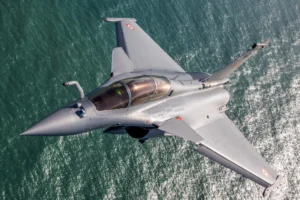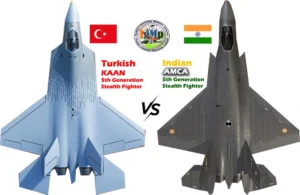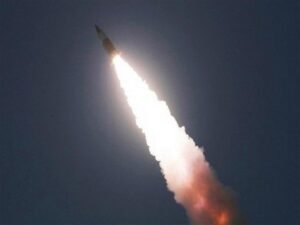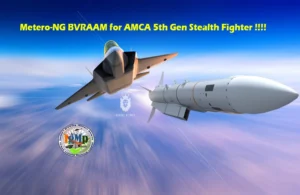Source : Indian Defence Analysis

India building a massive Integrated Rocket Force to counter Chinese PLA Rocket Force
The People’s Liberation Army Rocket Force (PLARF) has the world’s largest ground-based conventional missile force. It has evolved from the Second Artillery Force of the PLA to PLARF, which makes it another service like the army, navy and air force. The PLARF has increased by 33 per cent increase in size in three years between 2017 and 2019, which shows how fast China is building its rocket force.
The PLA Rocket Force fields a variety of conventional mobile ground-launched short, medium, and intermediate-range ballistic missiles and ground-launched cruise missiles which complements the air and sea-based precision strike capabilities of the PLAAF and PLAN.
Need for Integrated Rocket Force
The former Chief of Indian Army General Manoj Naravane had said that the future conflicts would follow a “reverse linearity” conduct of operations with rear facilities such as command & control posts, logistics hubs, airfields & comms nodes taking the first salvo from precision standoff weapons.
The second salvo of autonomous drones would aim to overwhelm and destroy air defenses, artillery pieces, missile bases, and tank formations, while rocket and gun artillery attacks finished off troops at forward-deployed localities.
What the former Army Chief has said is being witnessed in on-going Russia Ukraine conflict. Both the sides have been targeting the opponent’s oil & ammunition depot, with barrage of missiles, rockets & loitering munition. If unfortunately India-China lock horns in similar kind of conflict, we would witness similar kind of attack.
Therefore it becomes extremely important for India to build a credible & centralized rocket force which could provide effective deterrence against the PLAF and move towards the non contact warfare. An Integrated Rocket Force will allow Indian forces to target Chinese force concentrations along the Line of Actual Control and dual-use infrastructure in Tibet. It will also bring existing missile assets under a singular architecture and doctrine.
India’s progress towards Integrated Rocket Force
In recent few years, India has made significant progress towards building its short & long range conventional missiles for non-nuclear strike.
In September 2021, India’s first Chief of Defence Staff late General Bipin Rawat had said that India is looking to create a Rocket Force that could potentially control and maintain the country’s missiles.
The IRF of India will be different from the Strategic Forces Command (SFC). The SFC will be responsible for country’s nuclear arsenal & will be in charge of the nuclear-capable missiles of India which are Prithvi-II (350-km range), Shaurya (750-km), Agni-1 (700-km), Agni-2 (2,000-km), Agni-3 (3,000-km), Agni-4 (4,000-km) and Agni-5 (over 5,000-km) ballistic missiles. SFC will also be in charge of nuclear-powered submarines armed with nuclear-tipped missiles.
150-500 KM Pralay Missile
Envisioned by India’s first Chief of Defence Staff late General Bipin Rawat, the Pralay Ballistic Missile will be one of the main elements of the country’s dedicated Rocket Force and play a key role in defending the nation against long-range threats.
The defence acquisitions council has already given the acceptance of necessity (AoN) for the IAF to induct one Unit or 120 Pralay missiles, which will be followed by another 2 units or 250 such Pralay missiles for the Army.
Pralay is going to be a canisterised tactical, surface-to-surface, and short-range ballistic missile (SRBM). It is comparable with Russia’s 9K720 Iskander in range and trajectory. It is superior to traditional ballistic missile as it follows quais-ballistic trajectory which makes it difficult to detect. Pralay having range between 150-500 km, can strike on all the Chinese air bases, SAM, radar sites and other military assets across the LAC.
India is also building multi-purpose tunnels in border states to store land-based short-range tactical missiles. These tunnels will store & safeguard the missiles against preemptive Chinese attacks and allow quick deployment during a crisis.
1500 KM Long Range Cruise Missile
The next missile which is going to be crucial for IFR will be long-range cruise missiles with range in excess of 1,000-km range which will be a derivative of Nirbhay subsonic cruise missile. At present DRDO is developing ITCM-TD which will be 100% indigenous & will be powered by indigenous Small Turbo Fan Engine (STFE) engine of 400 kg-force thrust class. As per DRDO, the time for the project completion of ITCM-TD is July 2023. The spin-off of this program will be land, air, surface and subsurface based long range cruise missiles.
These missile will have range of 1,500 KM which will enable it to strike deep inside the Chinese territory. The missile can be launched from BrahMos Universal Vertical Launcher Module of Indian Navy & the underwing pylon of SU-30 MKI used for launching BrahMos-A. Its land version will be a typical truck mounted system. The SLCMs is also under development and will be tested first on the Russian-origin Sindhughosh-class (Kilo-class) submarines.
800 KM BrahMos Supersonic cruise missile
BrahMos is a supersonic cruise missile which has been inducted in all three services. Its range has already been extended from original 290 km to 450 km and the new missile is being called as BrahMos-ER. DRDO is also working on further extending its range to 800 km. At the same time, a smaller, lighter and equally capable missile BrahMos NG is also in development. The PDR for the missile has been completed and
Conclusion
To summarize, the missiles that will make up the upcoming IRF of India will be Pralay, LR-LACM, ,BrahMos, Pinaka MBRL and other standoff weapons. India building a massive Integrated Rocket Force to counter Chinese PLA Rocket Force India building a massive Integrated Rocket Force to counter Chinese PLA Rocket Force India building a massive Integrated Rocket Force to counter Chinese PLA Rocket Force India building a massive Integrated Rocket Force to counter Chinese PLA Rocket Force India building a massive Integrated Rocket Force to counter Chinese PLA Rocket Force India building a massive Integrated Rocket Force to counter Chinese PLA Rocket Force India building a massive Integrated Rocket Force to counter Chinese PLA Rocket Force India building a massive Integrated Rocket Force to counter Chinese PLA Rocket Force India building a massive Integrated Rocket Force to counter Chinese PLA Rocket Force India building a massive Integrated Rocket Force to counter Chinese PLA Rocket Force IgMp








